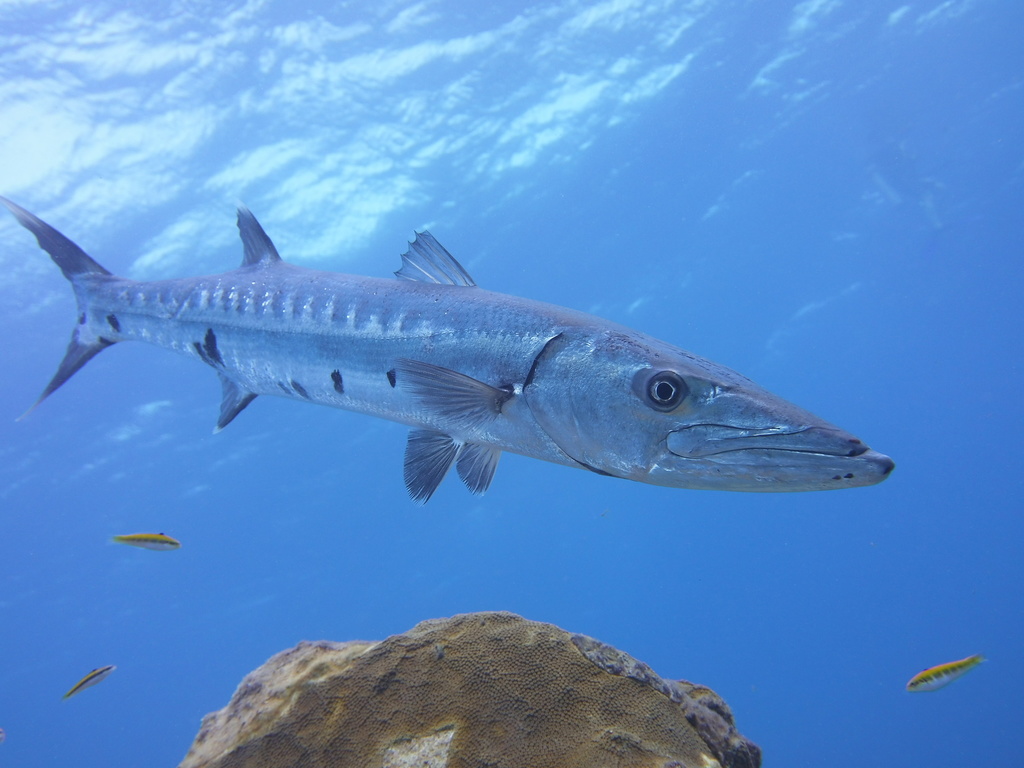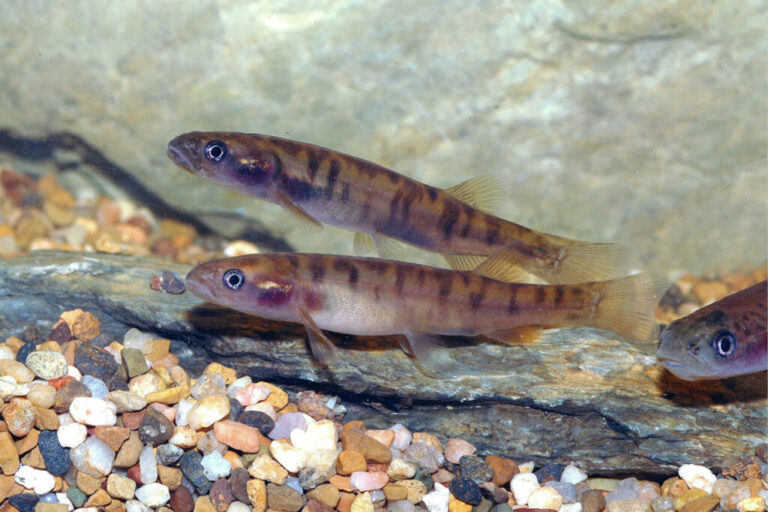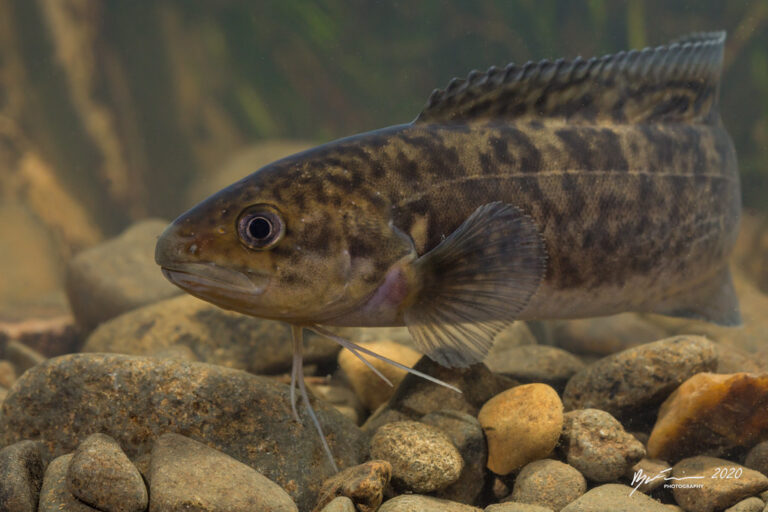Also known as the Giant Barracuda and Small-eyed Barracuda, the Great Barracuda (Sphyraena barracuda) is present in tropical to warm temperate waters, in subtropical parts of the Indian, Pacific and Atlantic oceans, from mangrove areas to deep reef.
Australian Museum’s Atlas of Living Australia reports sightings as far south as South West Rocks. Juvenile Great Barracuda are found inshore but adults are usually observed in open waters or near reef.
Great Barracudas are one of the largest of the barracudas and large specimens can exceed 1.5m and weigh over 23kg. The record-sized specimen caught on rod-and-reel weighed 46.72kg and measured 1.7m (the largest Great Barracuda was said to have measured 3m).
The Great Barracuda is elongated fish with powerful jaws, blue-grey above, fading to silvery and chalky-white below. Sometimes, a row of darker cross-bars occurs on its upper side, with black blotches on each lower side. The second dorsal fin and the anal and caudal fins range from dark violet to black with white tips.

The lower jaw of the large mouth juts out beyond the upper. Barracudas possess strong, fang-like teeth that are unequal in size and set in sockets in the jaws and on the roof of the mouth. The head is quite large and is pointed and pike-like in appearance. The two dorsal fins are widely separated, the second dorsal fin and is situated above it. The caudal fin is forked or concave, and it is set at the end of a stout peduncle. Barracudas appear in open seas.
They are voracious predators and hunt by ambush, feeding on vast array of fishes. Barracudas have a large gape and very sharp teeth, enabling them to feed on large fishes by chopping them in half. Seychelles guides recommend Sempers, Deceivers, and Poppers with “stinger” hooks as the preferred flies for barracuda. The fly is allowed to sink and when the fish is approx. 2m away from the fly make one long fast-paced full ex-tension strip and stop.
Big fish will reverse to build a run-up, before coiling like a spring and then slamming the fly. Florida guides use similar flies and tactics but also recommend a floating line with a clear tip as they have found that opaque lines seem to spook fish. Barracuda are a popular target for recreational fishing, due to the strong fight they put up when hooked. Just take care to avoid the toothy end when landing one.




